#namche bazaar
Explore tagged Tumblr posts
Text

Namche December 2017
3 notes
·
View notes
Text



A winter trek in the Everest region offers unmatched tranquility, with pleasant days and views of breathtaking clarity. Majestic peaks stand sharp against the azure sky, while chilly nights bring a touch of winter's sigh.
#trekking in nepal#everest#winter hike#everest base camp trek#hotel everest view#namche bazaar#lukla#phakding#gorakshep#kalapatthar
1 note
·
View note
Text
The hot cuppa satisfaction!
Describe your dream chocolate bar. I think it was on day 3 of our trek going up to EBC that we reached Namche Bazaar. Namche Bazaar is one of the acclimatization stops and the start of the real trekking routes into the Himalayas. It is considered the last ‘civilized’ stop on the route. We had landed in Lukla Airport which was an adventure in itself. After the first couple of nights in Lukla, and…
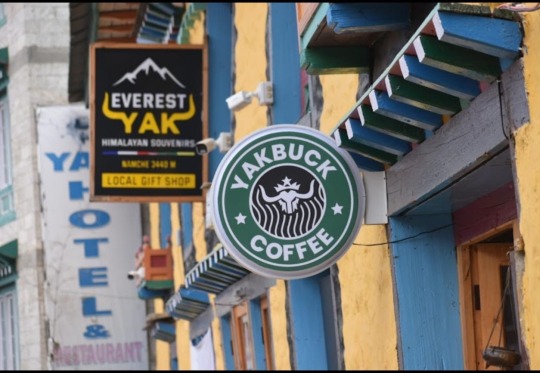
View On WordPress
#dailyprompt#dailyprompt-1960#family#grateful#Himalaya#hot chocolate#life#lukla#memories#namche bazaar#phakding#Travel#trekking#Yakbuck
0 notes
Text
Discover the Namche Bazaar: Your Ultimate Gateway to Everest
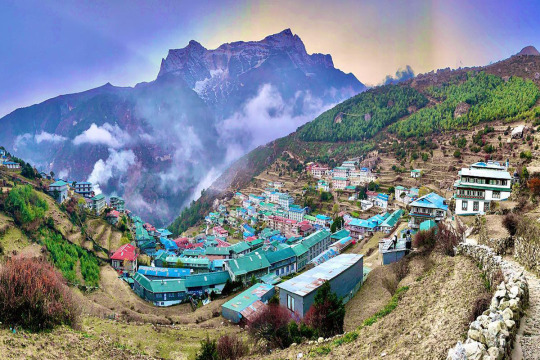
Hello, fellow adventurers! 🌄
If your heart beats for the mountains and your soul craves thrilling escapades, then Namche Bazaar in Nepal should be your next travel destination. This picturesque town, perched at 3,440 meters (11,286 feet), is much more than a mere stopover for trekkers heading to Everest Base Camp. It is a vibrant hub brimming with rich culture, stunning landscapes, and unique experiences. Let's embark on a virtual journey to uncover the charm of Namche Bazaar!
What is Namche Bazaar?
Namche Bazaar, often referred to as the "Gateway to Everest," is a bustling town in the Solu-Khumbu region of Nepal. Situated on the slopes of an arch-shaped mountain, Namche offers spectacular views of the Himalayan giants, including Ama Dablam, Thamserku, and the world-renowned Mount Everest. But there's much more to Namche Bazaar in Nepal than its awe-inspiring scenery.
Why Visit Namche Bazaar?
Breathtaking Scenery
Panoramic Views: One of the highlights of visiting Namche Bazaar is the unparalleled panoramic views of the surrounding peaks. On a clear day, you can even catch a glimpse of Everest.
Sunrise and Sunset: The town provides some of the best spots to witness the magical sunrise and sunset over the Himalayas, creating memories that will last a lifetime.
Rich Sherpa Culture
Sherpa Museum: Delve into the history and culture of the Sherpa people by visiting the local museum, which offers insights into their way of life, mountaineering history, and traditions.
Local Cuisine: Savor traditional Sherpa dishes such as momos (dumplings), thukpa (noodle soup), and the unique butter tea, which is a staple in the high-altitude region.
Adventure Activities
Trekking: Namche is a pivotal stop on the Everest Base Camp trek. For those who prefer shorter hikes, there are plenty of day treks offering splendid views and cultural encounters.
Shopping: The weekly market is a vibrant scene where you can buy souvenirs, local crafts, and essential trekking gear.
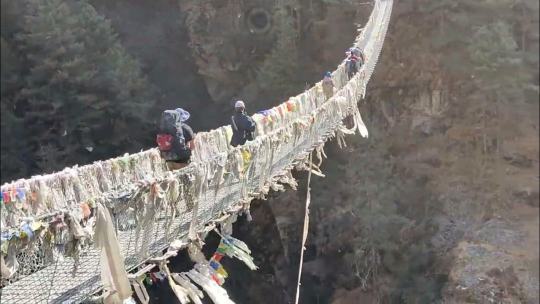
About Namche Bazaar
Namche Bazaar is not just a place to rest and acclimatize; it's a lively town with much to explore. Here's a closer look at what makes Namche Bazaar in Nepal so special:
Accommodations
From cozy teahouses to more luxurious lodges, Namche offers a range of accommodations to suit every budget and preference. Whether you're looking for a simple bed to rest after a long trek or a more comfortable stay with extra amenities, Namche has you covered.
Dining
The town boasts a variety of food options. You can enjoy traditional Nepali and Tibetan cuisine, as well as international dishes. Don’t forget to try the local butter tea and yak cheese, which are unique to the region.
Connectivity
One of the few places in the Everest region where you can find Wi-Fi, Namche Bazaar allows you to stay connected with your loved ones and share your adventure in real time.
Tips for Visiting Namche Bazaar
Acclimatize Properly: Spending a couple of days in Namche is crucial for acclimatization before ascending to higher altitudes. This helps prevent altitude sickness.
Pack Smart: Ensure you bring warm clothing, as temperatures can drop significantly, especially at night. Layering is key.
Stay Hydrated: Drink plenty of water to help with acclimatization and to stay energized for your treks.
Best Time to Visit
The ideal times to visit Namche Bazaar in Nepal are during the pre-monsoon (March to May) and post-monsoon (September to November) seasons. During these periods, the weather is generally stable, and the skies are clear, offering the best views of the mountains.
Must-Do Activities in Namche Bazaar
Trek to Everest View Hotel
For those who want to see Everest without the grueling trek to Base Camp, a hike to the Everest View Hotel is perfect. This trek provides stunning views of Everest and surrounding peaks and is doable in a day.
Visit the Sherpa Museum
A visit to the Sherpa Museum is a must. It provides a deep dive into the life of the Sherpa people, their history with mountaineering, and their rich cultural heritage.
Explore the Local Market
Every Saturday, Namche Bazaar comes alive with its weekly market. Here, you can find everything from fresh produce and local crafts to essential trekking gear and souvenirs.
Final Thoughts
Namche Bazaar is more than just a gateway to Everest; it’s a destination filled with rich culture, stunning landscapes, and thrilling adventures. Whether you’re a seasoned trekker or a casual traveler looking for a unique experience, Namche Nepal has something special for you. So, lace up your hiking boots, pack your sense of adventure, and get ready to explore this Himalayan gem!
Happy trekking, and see you on the trails!
Feel free to share your experiences or ask any questions in the comments below. We love hearing from fellow adventurers!
#namche bazaar#namche bazaar in nepal#namche nepal#about namche bazaar#namche bazzar#Everest Base Camp Trek
0 notes
Text

There are plenty of rewarding things for you to see and do when spending a day or two acclimatising in Namche Bazaar on the Everest Bae Camp trek. Here are our top recommendations.
https://followalice.com/knowledge/the-best-things-to-do-in-namche-bazaar
0 notes
Text
Embarking on the Roof of the World: A Journey to Everest Base Camp
The Everest Base Camp (EBC) Trek stands as an iconic pilgrimage for adventurers seeking to stand in the shadow of the world's highest peak. This Himalayan odyssey weaves through breathtaking landscapes, immerses trekkers in Sherpa culture, and culminates in the iconic base camp beneath the towering summit of Mount Everest. Join us as we traverse the trails, ascend to dizzying altitudes, and experience the allure of the Everest region

Section 1: Landing in Lukla - The Gateway to Everest The journey begins with a thrilling flight to Lukla, a tiny airstrip perched amidst the mountains. This dramatic landing sets the tone for the adventure that lies ahead as trekkers step into the heart of the Khumbu region.
Section 2: Phakding to Namche Bazaar - Into the Rhythm of the Khumbu The trail leads alongside the Dudh Koshi River through picturesque villages like Phakding, gradually ascending towards Namche Bazaar. The bustling Sherpa town serves as a cultural hub, offering a blend of mountain hospitality, vibrant markets, and stunning mountain views.
Section 3: Acclimatization in Namche - Gateway to Everest View Acclimatization in Namche involves a visit to the Everest View Hotel, providing trekkers with a panoramic preview of the world's highest peaks, including Everest, Lhotse, and Ama Dablam. This strategic pause ensures the body adjusts to the increasing altitude.
Section 4: Tengboche Monastery - Spiritual Haven The trek proceeds to Tengboche, home to the iconic Tengboche Monastery. Nestled amidst rhododendron forests, the monastery offers a serene respite and panoramic views, creating a spiritual ambiance amidst the Himalayan grandeur.
Section 5: Dingboche and Lobuche - Alpine Landscapes As the trail ascends, trekkers reach Dingboche and Lobuche, traversing alpine landscapes and high-altitude terrains. The stark beauty of the surroundings and the proximity to towering peaks create an atmosphere of both challenge and inspiration.
Section 6: Everest Base Camp - The Culmination The climax of the trek arrives as trekkers reach Everest Base Camp, standing at the foot of the mighty Everest. The Khumbu Icefall, prayer flags, and the presence of fellow adventurers amplify the sense of accomplishment and reverence for the world's highest summit.
Section 7: Kala Patthar - Panoramic Triumph For an unparalleled panoramic view, the trek includes a visit to Kala Patthar, a vantage point at 5,545 meters. The sunrise from this viewpoint unveils a breathtaking 360-degree panorama of the Everest region, capturing the heart of every trekker.
Section 8: Descent and Reflection As the journey descends through familiar trails, trekkers have the opportunity to reflect on the challenges conquered, the friendships forged, and the indelible memories etched during their Himalayan odyssey.
Conclusion: The Everest Base Camp Trek is a testament to the indomitable spirit of exploration, an immersion into the natural grandeur of the Himalayas, and a cultural journey through the Sherpa way of life. Saddle up, fellow trekkers, as we traverse the trails, breathe in the mountain air, and stand in awe before the majesty of Everest. The memories crafted along this unparalleled journey become a cherished chapter in the book of mountain adventures, forever etched in the hearts of those who dare to venture to the roof of the world.
0 notes
Text
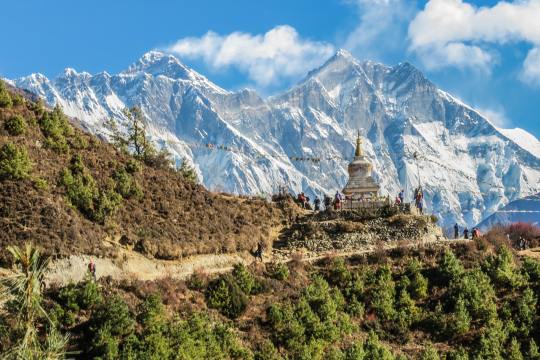
Namche Bazaar Stupa (Buddhist Temple) in Namche, Nepal
Taken by Sebastian Pena Lambarri
1 note
·
View note
Note
Bonsoir , vont ils faires "chemin" inverse quant ils seront arrivés au camp de base ou prendre un hélico pour rentrer ? Merci
Good evening, will they take the opposite "way" when they arrive at base camp or take a helicopter to return? Thanks
I don't think they will take the same way back. That would take too long. I rather think they might be exploring some locations at the level they are now, around Gorakshep and Lobuche. There are several (shorter) hikes which can be done in a day.
Not sure if they will be picked up again by a helicopter at some point, could well be. Either that or they descend along the more general trail most people do, along Dingboche, Pamboche and Namche Bazaar perhaps.
I'm sure we'll find out at some point 😉
19 notes
·
View notes
Text

Geographical Overview
Gorak Shep is located within the Sagarmatha National Park, home to the Sherpa people, renowned for their skills as guides and mountaineers. It is the final stop on the most common trekking routes to Everest Base Camp from Lukla (2,860 m), following what the Dalai Lama has called “the steps to heaven.”
This route takes trekkers from Lukla to Namche Bazaar, Tengboche, Pangboche, Dingboche, Lobuche, and finally to Gorak Shep. Most trekkers spend the night there since their trekking permits do not allow them to camp at Everest Base Camp.
Additionally, Gorak Shep serves as the best “launch pad” for the ascent of Kala Patthar, which resembles a giant dune looming over the lakebed. For many trekkers, the summit of Kala Patthar, at 5,550 meters, offers the best views of Everest that most will achieve without a climbing permit, which must be obtained in Kathmandu at the Nepal Mountaineering Association.
The climb begins early in the morning when visibility is usually better. It takes about four hours to reach the summit and return. The hiking time from Gorak Shep to Everest Base Camp ranges from 1.5 to 2.5 hours, depending on the weather, acclimatization, and individual fitness levels.
When to Go
The best times for trekking are in spring (March and April) and autumn (October and November), when mountain visibility is ideal, and temperatures are not excessively cold. However, in autumn, competition for lodging can be intense, though trekkers can usually sleep on the dining room floor.
During winter, from December to February, trekking is possible, but the vast majority of accommodations are closed, trails are snow-covered, and the cold is extreme.
Historical Notes
Gorak Shep was the original Everest Base Camp, used by Swiss climbers during their attempt to scale Everest in 1952. The camp was later moved closer to the mountain, just below the Khumbu Icefall.
@samheughanupdates
Cenni geografici
Gorak Shep si trova all'interno del Parco nazionale di Sagarmatha, la patria del popolo Sherpa, famoso per le sue abilità come guide e alpinisti. È l'ultima tappa dei trekking più comuni verso il campo base dell'Everest da Lukla(2.860 m), seguendo quello che il Dalai Lama ha soprannominato "i passi verso il paradiso".
Questo percorso porta gli escursionisti da Lukla a Namche Bazaar, Tengboche, Pangboche, Dingboche, Lobuche e poi a Gorak Shep. La maggior parte degli escursionisti trascorre la notte lì, poiché i loro permessi di trekking non consentiranno loro di accamparsi al campo base dell'Everest.
Inoltre, Gorak Shep fornisce il miglior "trampolino di lancio" per l'ascesa del Kala Patthar, che sembra una duna gigante che incombe sul fondo del lago. Per molti escursionisti, la vetta del Kala Patthar, con i suoi 5.550 metri, offre sia le migliori viste sull'Everest, che la maggior parte raggiungerà senza un permesso di arrampicata, che deve essere ottenuto a Kathmandu, presso la "Nepal Mountaineering Association".
L'arrampicata inizia al mattino presto, quando la visibilità è solitamente migliore. Ci vogliono quattro ore per raggiungere la vetta e tornare indietro. Il tempo di arrampicata da Gorak Shep al campo base dell'Everest varia da 1,5 a 2,5 ore, a seconda del tempo, dell'acclimatazione e della condizione fisica di ogni individuo.
Quando andare
I periodi migliori per il trekking sono la primavera (marzo e aprile) e l'autunno (ottobre e novembre), quando la visibilità della montagna è ideale e la temperatura non è eccessivamente fredda. Tuttavia, in autunno la competizione per i posti letto nei lodge può essere intensa, sebbene normalmente gli escursionisti possano dormire sul pavimento della sala da pranzo.
Durante l'inverno, nei mesi da dicembre a febbraio, è possibile fare trekking, ma la stragrande maggioranza degli alloggi è chiusa, i sentieri sono innevati e il freddo è molto intenso.
Cenni storici
Gorak Shep era l'originale campo base dell'Everest, utilizzato dagli alpinisti svizzeri nel tentativo di scalare l'Everest nel 1952. Successivamente il campo è stato spostato più vicino alla montagna, appena sotto la cascata di ghiaccio del Khumbu.
9 notes
·
View notes
Text
Why the Everest Base Camp Trek is a Must-Do Adventure
The Everest Base Camp Trek (EBC Trek) is one of the most iconic and sought-after trekking experiences in the world. This legendary journey takes you closer to the majestic Mount Everest, the tallest mountain on Earth, while offering breath-taking views of several other towering peaks like Lhotse, Makalu, and Cho Oyu. But the trek isn’t just about the destination—it's about the entire journey, the vibrant Sherpa culture, the serene landscapes, and the sense of accomplishment you'll feel when you reach Everest Base Camp itself.
At Trek The Himalayas, we are passionate about making this adventure as memorable and fulfilling as possible. Here’s why the Everest Base Camp Trek should be on every trekker’s bucket list.
1. Incredible Views of Mount Everest and Other Himalayan Peaks
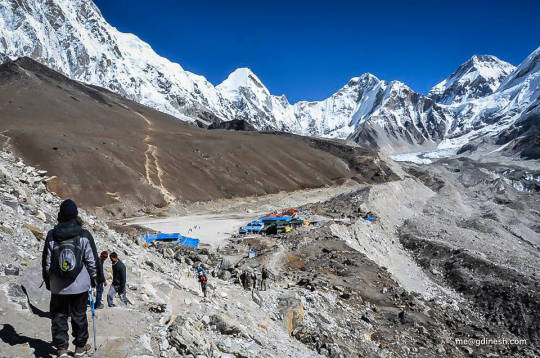
The Everest Base Camp offers unparalleled views of Mount Everest (8,848.86 meters), the highest peak in the world. Along with Everest, you’ll witness other world-famous mountains like Lhotse, Makalu, Cho Oyu, Ama Dablam, and Nuptse. These towering giants will accompany you throughout your trek, constantly reminding you of the awe-inspiring beauty and scale of the Himalayas.
One of the highlights is Kala Patthar—the highest point on the trek at 5,545 meters. From here, you’ll be treated to a panoramic view of Everest, and other peaks such as Pumori, Lhotse, and Nuptse. The sunrise and sunset views from Kala Patthar are magical, with the peaks glowing in the morning light and transitioning to soft golden hues in the evening.
2. Cultural Immersion in the Sherpa Villages
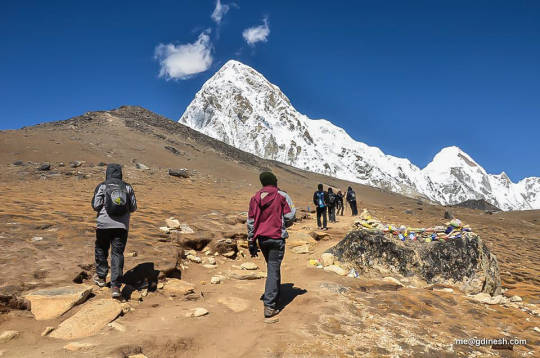
The EBC Trek isn’t just a journey through nature; it’s a cultural expedition as well. The trail passes through several traditional Sherpa villages like Namche Bazaar, Tengboche, and Dingboche, where you’ll have the opportunity to experience the hospitality of the Sherpa people. The Sherpas are known for their resilience and deep connection to the mountains.
Throughout the trek, you’ll encounter Buddhist monasteries, prayer flags, and stupas, offering you a spiritual experience that enhances the physical challenge of the trek. Trekking in the heart of Sherpa culture, you'll learn about their rich traditions and lifestyles and gain insight into their everyday lives in this remote Himalayan region.
3. Experience the Thrill of High-Altitude Trekking

Trekking to Everest Base Camp is not just about reaching a destination; it’s about the physical challenge and mental resilience required to reach it. EBC trekking takes you to elevations of over 5,000 meters, and trekking at high altitudes is not something most people experience. The sensation of reaching Everest Base Camp, standing at the foot of the world’s highest peak, is indescribable. The sense of achievement is unmatched and one of the main reasons why so many trekkers set out on this journey.
The trail offers exhilarating experiences such as crossing suspension bridges over rushing rivers, trekking through dense pine forests, and navigating through rocky terrain. As you climb higher, the views become even more dramatic, motivating you to push through the challenges of the trek.
4. The Sense of Accomplishment at Everest Base Camp

Reaching Everest Base Camp is a dream come true for many trekkers, and it’s one of the most rewarding moments of the trek. After several days of walking through rugged trails, beautiful valleys, and crossing high-altitude passes, arriving at the base camp itself is a thrilling and emotional experience. It is the starting point for those who attempt to summit Mount Everest and represents the culmination of a challenging journey for trekkers from around the world.
The feeling of standing at the base of Everest, with the grandeur of the surrounding peaks and glaciers, is one of the most satisfying accomplishments any trekker can achieve.
5. Exploration of Sagarmatha National Park (UNESCO World Heritage Site)

The Everest Base Camp Trek takes you through Sagarmatha National Park, a UNESCO World Heritage site. The park is rich in biodiversity, home to rare species like the snow leopard, red panda, and Himalayan tahr. It also offers stunning views of rivers, glaciers, and valleys that add to the trek's natural beauty.
As you trek through this national park, you will encounter ancient Buddhist monasteries, including Tengboche Monastery, and cross pristine alpine meadows, crystal-clear lakes, and other awe-inspiring landscapes that showcase the beauty of the Khumbu region.
6. Tea House Stays and the Unique Experience of Mountain Lodging
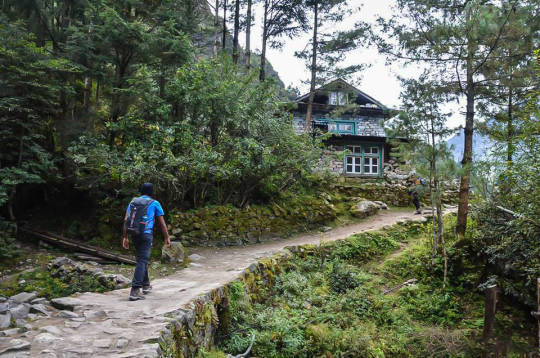
A trek to Everest Base Camp is a teahouse trek, meaning that along the route, you will stay in local tea houses or mountain lodges. These cozy accommodations, built from wood and stone, offer a warm place to rest after a long day of trekking. Staying in these mountain lodges is a unique experience in itself, where you will be surrounded by stunning views of snow-capped peaks.
The tea houses provide meals and shelter, and you can interact with fellow trekkers and locals. It’s a wonderful way to unwind after your daily trek while soaking in the authentic mountain atmosphere.
7. Kala Patthar: The Ultimate Everest Viewpoint

When you reach Kala Patthar, you’ll experience one of the best panoramic views of Mount Everest and its surrounding peaks. Located at an altitude of 5,545 meters, Kala Patthar is the highest point of the trek and offers breathtaking views of Everest, Lhotse, Makalu, and other prominent peaks. Watching the sunrise from here is a surreal experience that many trekkers describe as one of the highlights of the entire journey.
8. A Journey Through History and Legacy
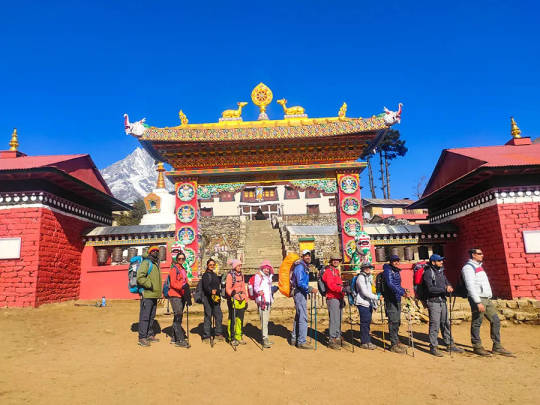
Along the EBC Trek, you’ll pass by memorials for famous mountaineers like Tenzing Norgay and Edmund Hillary, who first successfully summited Mount Everest. These memorials, located near Dughla and Tenzing Norgay Stupa, are poignant reminders of the courage and perseverance required to scale Everest. The sense of history adds a meaningful dimension to the trek, reminding trekkers of the great legacy left behind by these pioneers.
9. An Adventure That Will Stay With You Forever
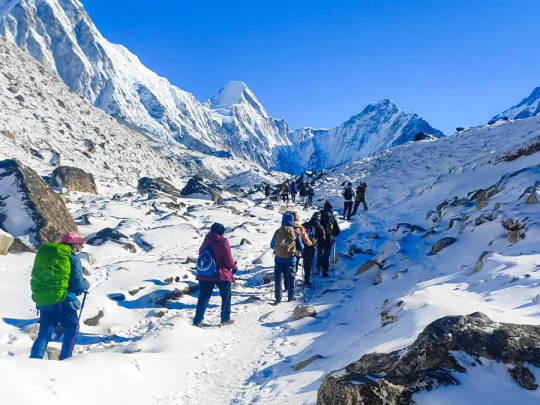
The Everest Base Camp Trek offers an adventure unlike any other. With each step, you’ll be rewarded with views of towering mountains, lush forests, rushing rivers, and ancient villages. It’s a trek that combines adventure, culture, and natural beauty, making it a bucket-list journey for trekkers across the globe.
Why Choose Trek The Himalayas for Your Everest Base Camp Trek?
When you embark on the EBC Trek, it's important to choose a reliable and experienced trekking partner. Trek The Himalayas has a team of expert guides and porters who know the Everest region inside and out. With our years of experience, we ensure your trek is safe, enjoyable, and unforgettable. From the right gear to acclimatization advice, we’ll help you prepare for the journey of a lifetime.
Ready for the adventure of a lifetime? Let Trek The Himalayas guide you on the Everest Base Camp Trek—an experience you will cherish forever.
#everest base camp trek#everest base camp#trek the himalayas#trekking in nepal#ebc trek#ebc trekking
2 notes
·
View notes
Note
*gesturing wildly, joy in my heart flailing arms in the air*
I’ve recently got,like, realllllly hooked on your dragon/royalty au and decided to skip on over here to poke around your other works. I then realized I had also read you Pain on Main fics on a separate occasion during a dead on main kick and I went like ‼️‼️‼️‼️‼️ (in a good way!!!) and I’m now flailing over and about the pinky promises fic and. Anyways! I love your writing and I hope you’re having a great day!!!
And for no particular reason, do you have any specific vision reference pictures for where Frostbite stays with the village?
i am also ‼️‼️‼️‼️‼️hi hello, dear anon! thank you for enjoying my work, i'm glad you found my tumblr and sent an ask. how very sweet of you, i shall stash this away for a bad day when i need cheering up.
re: vision for Frostbite & the village
so i find mountaineering incredibly interesting, and i was drawing on some of that. the mountain Frostbite lives on is a mesa, flat stopped and i was thinking of Denali (in Alaska, USA). then, the village is kind of a 'waypoint' camp, like how there will be set camps along a mountain for climbers to stop. the image below is of Everest with the different camps. so Danny's abandoned tower would be like Camp II, the cave they bivvied in would be Camp III, and the village would be like Camp IV (frostbite's mountain isn't as high of an elevation all together, and less dangerous). The village i was imagining in my head in something like Namche Bazaar, which is the last human settlement before the base camp on Everest (but a bit more austere and a quite a bit smaller).



5 notes
·
View notes
Text

Khumbi Yul La
#khumbu#nepal#trekking#adventure#horizon5 adventure#himalaya#buddhism#everest base camp trek#hiking#namche bazaar#mani stone#yak farm
9 notes
·
View notes
Text
Tengboche Monastery: The Largest Monastery Among The Highest Mountains in the Everest Region
Tengboche Monastery is a sanctified place of serenity and devotion that is highly regarded in Tibetan Buddhism. Located in the northeastern part of Nepal, in the Sagarmatha National Park, the monastery is the most widely known Buddhist monastery in the Himalayas of Khumbu. A place of spiritualism and sacredness, it is nestled among the alpine hills, with the stunning backdrop of Ama Dablam and the intersection of two reverberating rivers, Dudh Koshi and Imja Khola. At an elevation of 3,867 meters and directly falling on the route of the Everest Base Camp Trek.
History and Historical Importance
Established in 1916 by Lama Gulu, a Tibetan monk known for being blessed by Ngawang Tenzin Norbu, who was known to be the fifth incarnation of Sangwa Dorje,. The Tengboche Monastery has stood the testament of time, as it was struck by an earthquake in 1934 and again destroyed in a fire in 1989. It was rebuilt both times, and now it has become a symbol of peace and resilience among the Sherpas and trekkers.

The monastery is a well-respected landmark among the trekking and mountaineering communities. As it falls right on the route to Mount Everest, many trekkers and mountaineers make a stop here to light candles and get blessings for a successful summit. Hence, it is also known as the “Gateway to Everest.”
Art and Architecture
Talking about the arts and architecture, many paintings, books, murals, and statues were destroyed during the fire, and only a few were salvaged. Now the monastery has been rebuilt under the leadership of the current Nawang Tenzing Jangpo, who is considered the incarnation of the founder, Lama Gulu, with the help of the donations of the trekkers. The walls are decorated with the intricate arts of the bodhisattva, drawn by the Tibetan painter Tarke-la.
From the gates of the monastery to the inside walls, it is filled with detailed paintings and carvings of symbols and arts representing Buddhist teachings and blessings. The paintings and architecture are the perfect fusion of Nepali and Tibetan culture and arts.
Connection with Culture and Traditions: Mani Rimdu Festival and Dumji Festival

The festival is celebrated with elaborate elements of religious ceremonialism, dance, and drama. Beginning on the first day of the tenth month of the Tibetan Lunar Calendar, the festival is celebrated with traditional dances with masks, praying ceremonies, and feasts.
Similarly, the Dumji festival is also celebrated among the Sherpa communities of Solukhumbu. While the Mani Rimdu festival marks the founding of Buddhism, the Dumji festival celebrates the birth of its founder, Guru Rinpoche Padmasambhava. The festival primarily focuses on the connections between families and communities. It is an annual festival that is celebrated in the month of July, which follows the Tibetan lunar calendar. It is a four-day-long festival that helps bring the communities together, as every thirteen years, it is the duty of three families to provide food and beverages for the village during the celebrations.
In the end, these festivals are the pillars for the sustenance of the Sherpa communities, as they bring all the villages together to celebrate happiness and peace.
How do I get to Tengboche Monastery?
Tengboche Monastery Trekking is quite popular among trekkers, especially for those who wish to dive deep into Buddhism or are interested in celebrations of Sherpa cultures. This is why it is pretty common for people to book the trek just around the times of festivals like Mani Rimdu, Loshar, and Dumji. The trek to the Tengboche Monastery begins just like any other trekking destination to Everest, with a thrilling flight to Lukla. Then, your destination follows the classic Everest Base Camp route via Phakding and Namche Bazaar, and finally, you will reach Tengboche. It can be anywhere from 5 to 6 days of trekking, where you can enjoy the crisp air of the Khumbu.

As the trail runs through Sagarmatha National Park, you will require three permits: Trekker’s Information Management System (TIMS), Pasang Lhamu Municipality Fee, and Sagarmatha National Park Fee. The trek to the Tengboche Monastery will definitely be a spiritual and natural experience.
The path is mostly uphill as you trek through the alpine forest of rhododendrons along the side of the Dudhkoshi River. Upon your arrival, you will see a gate of entry and a grassy field. Then, you will finally see the monastery building, surrounded by beautiful peaks, most notably Ama Dablam.
What is the best time to visit the Tengboche Monastery?
Speaking of weather, the best time to visit falls during the spring (March-May) and autumn (September–November). During this time, the temperature is moderate, and the weather is nice, so you can see every mountain under the clear azure sky.

Luckily, the Mani Rimdu festival falls in October as well. Winter (December–February) is also the perfect time, as the weather is very clear, but it will be exceptionally cold. It will also be less crowded during the winter, so if you are well prepared to battle the freezing temperatures, you will have the best time. However, during the summer, it can be a bit tricky. The Khumbu region is very prone to rainfall, which can be a hindrance during the trek, especially with landslides occurring frequently, and poses a risk.
However, the mountain weather is always very tricky and is prone to frequent changes. Therefore, no matter which season, it is recommended that you follow a credible weather source before embarking on your treks or expeditions.
Things to take into account while visiting the Tengboche Monastery
Before anything else, one must know what this sacred site entails. Maintaining peace and respect while you visit is the top priority. Here is a list of things to follow during your visit to the Tengboche Monastery:
Dress modestly; people dressed in revealing clothes are not allowed inside the monastery.
Do not make noise or talk loudly on the premises of the monastery.
Make rounds of the monastery in a clockwise manner.
Greet and show proper respect to the monks.
Do not touch the monks, as physically touching the monks is forbidden.
Do not take photos or videos in the restricted zones of the monastery.
Know the proper stance when praying.
Pay respects by burning butter candles and incense.
A deep dive into the local lifestyle
The Sherpa communities have one of the most unique cultures in Nepal. With beautiful cultural dresses worn especially by the ladies and delicious Sherpa cuisine, you will have the time of your life during this trek. Especially during the festivals, you will come to witness vibrant, joy-filled interactions. Foods such as potatoes, yak cheese, dal bhat (rice and lentils), tsampa (barley flour), dhido, momo, thukpa, khapse, thenduk, and other delicious varieties are the highlights of this trip.
You will get a close-up look into the daily Sherpa activities such as morning prayers, preparing food, doing household chores, looking after their agriculture or animals, etc. Their simple lifestyle will bring you a sense of peace and yearning.
In conclusion
The trek to Tengboche is filled with rich natural and cultural influences that enhance your spiritual awakening. It is a short trek that will allow you to get the full experience of the ways of Buddhism as well as see the tallest mountain of the world, Mt. Everest, as well as other surrounding peaks such as Ama Dablam, Nuptse, Lhotse, etc.
So, if you are planning a trek to Tengboche Monastery, let us be at your service. We will arrange everything for you, from accommodation to transportation, with local and experienced guides. We guarantee you the best time with impeccable services.
For hassle-free and memorable trek experiences in Nepal, book your treks and tours with Alpine Ramble Treks. Contact us at 977-9851175531 or email [email protected] to make your trekking and expedition bookings for 2024/2025.
2 notes
·
View notes
Text
Conquering the Roof of the World: A Journey to Everest Base Camp
Welcome to the ultimate adventure in the Himalayas—the Everest Base Camp Trek! Join us as we embark on a thrilling journey through rugged terrain, ancient villages, and breathtaking landscapes to reach the iconic base camp of the world's tallest mountain. Lace-up your boots, pack your gear, and get ready for an experience of a lifetime amidst the towering peaks of Everest.
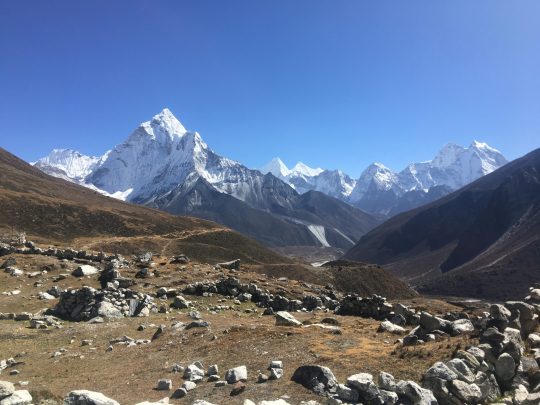
Embracing Nature's Grandeur: As we set foot on the trail, we're immediately immersed in the raw beauty of the Himalayas. Towering peaks, deep valleys, and cascading waterfalls surround us as we make our way through the Khumbu region. With each step, we're treated to awe-inspiring vistas and a sense of wonder at the sheer majesty of our surroundings.
Encounters with Sherpa Culture: Along the trail, we have the privilege of encountering the vibrant Sherpa culture that thrives in the shadow of Everest. From bustling mountain towns like Namche Bazaar to remote villages nestled in the mountains, each stop offers a glimpse into the unique way of life of the Himalayan people. We share meals with local families, visit ancient monasteries, and learn about the rich traditions that have been passed down for generations.
Challenges and Triumphs: Trekking to Everest Base Camp is no easy feat, but the rewards are immeasurable. We navigate steep mountain trails, cross swinging suspension bridges, and battle altitude as we make our way towards our goal. With each ascent, we're rewarded with stunning views, a sense of accomplishment, and a deeper connection to the land and its people.
Reaching Base Camp: After days of trekking through some of the most breathtaking landscapes on earth, we finally reach Everest Base Camp. Surrounded by towering peaks and vast glaciers, we're overcome with a sense of awe and wonder. We take a moment to soak in the beauty of our surroundings, knowing that we're standing at the foot of the world's tallest mountain.
Conclusion: The Everest Base Camp Trek is more than just a trek—it's an adventure of a lifetime that will leave you with memories to cherish forever. So lace up your boots, take a deep breath, and get ready to embark on an unforgettable journey to the roof of the world.
#EverestBaseCamp#TrekkingAdventure#Himalayas#MountainTrek#NepalTrek#OutdoorAdventure#ExploreTheWild#NaturePhotography#BucketListAdventure#TravelInspiration#HikingLife#AdventureSeeker#TrekkingInNepal#PeakExperiences#MountainMagic#NatureLovers#ExploreMore#TrailBlazers#HikingJourney#EpicViews
2 notes
·
View notes
Text
Picchi

In foto, Sir Edmund Hillary sulla vetta dell’Everest, 29 Maggio 1953.
Con lui c’era Tenzing Norgay, lo sherpa nepalese.
Il Times mandò, a carissimo presso, un corrispondente, James Morris, gallese, unico giornalista ammesso. Scrive un messaggio, lo affida a un runner, un messaggero che corre sul sentiero che collega il campo-base a Namche Bazaar, dove funziona l’unica radio della regione. Vista l’esclusiva, c’è il tacito accordo di inviare un messaggio in codice. Quello di Morris recita “condizioni neve cattive stop, base avanzata abbandonata ieri stop, attendiamo miglioramenti”. Quando viene decifrato in redazione, però, il significato è diverso. “Vetta raggiunta il 29 maggio da Hillary e Tenzing”. Il 2 giugno, mentre il corteo per l’incoronazione di Elisabetta II percorre le strade di Londra, gli strilloni del Times e gli altoparlanti annunciano che l’Everest è stato salito ai tre milioni di persone che assistono alla cerimonia. Morris sarà un giornalista investigativo fenomenale, e tra i suoi scoop Tra i suoi scoop nel 1956 per il Manchester Guardian rivelò che le forze francesi stavano attaccando segretamente l'Egitto durante la cosiddetta crisi del Canale di Suez. All'inizio degli anni '60, seguì il processo di Adolf Eichmann a Gerusalemme.
Morris nel 1964 fu una delle prime personalità ad iniziare una transizione di genere, e a dichiararlo pubblicamente: negli anni ‘70 si sottopose ad uno dei primi interventi chirurgici in Marocco per il cambio di sesso, divenendo Jan Morris. Femminista, saggista e scrittrice di grande successo, rimane sposata con Elizabeth Tuckniss dal 1949 fino ad una separazione consensuale a fine anni ‘70, pur rimanendo sempre vicine, tanto che si unirono in unione civile nuovamente nel 2008 e decidendo che sarebbero state, infine, sepolte insieme. Decisero anche l'iscrizione sulla lapide, sia in gallese che in inglese: "Qui giacciono due amiche alla fine di una vita". Jan Morris è morta nel 2020.
9 notes
·
View notes
Text
Everest Base Camp Trek - Conquer the Roof of the World!
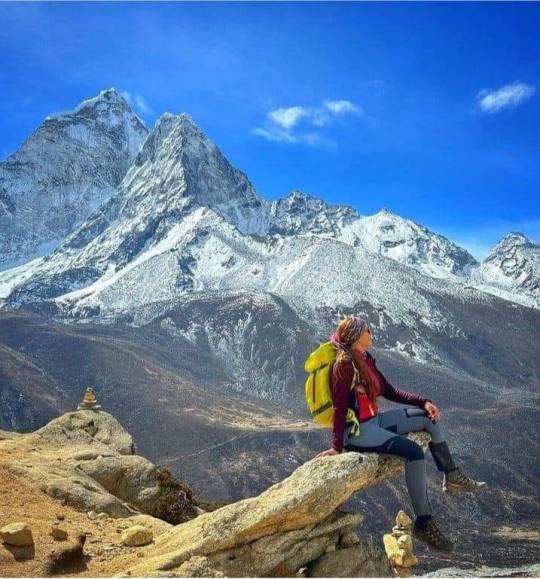
🏔️ 📅 Trip Duration: 14 days
📍 Destination: Nepal
🏞️ Trip Difficulty: Strenuous
🚍 Transport: Kathmandu - Lukla - Kathmandu
🍽️ Meals: Breakfast, Lunch & Dinner (BLD) during the trek 🏠
Accommodation: Cozy Teahouses & Lodges
👥 Group Size: Small & Personalized (Min. 1 / Max. 15)
⛰️ Max Elevation: 5,364m - Everest Base Camp
⏰ Walking Hours: 5-7 hours daily
🏁 Start/End: Kathmandu/Kathmandu
🚶♂️ Trekking Type: Local Lodge-based Tea House Trek
🌈 Best Season: February to May, September to December
🌟 TRIP HIGHLIGHTS
Trek to the base camp of the world's highest mountain, Mount Everest.
Experience the breathtaking beauty of the Khumbu region.
Witness stunning panoramic views of Everest, Lhotse, Nuptse, and more.
Explore the Sherpa culture and traditions in mountain villages.
Visit the famous Tengboche Monastery and receive blessings for a successful trek.
Travel with a small group for an intimate and personalized experience.
📋 DETAILED ITINERARY
Day 1: Arrival in Kathmandu Arrive in Kathmandu,
the bustling capital of Nepal. Meet your trekking guide and fellow adventurers. Rest and prepare for the exciting journey ahead.
Day 2: Flight to Lukla, Trek to Phakding (2,651m)
Take a thrilling flight to Lukla, the gateway to the Everest region. Embark on the trek to Phakding, passing through picturesque landscapes.
Day 3: Trek to Namche Bazaar (3,440m)
Continue the trek along the Dudh Koshi River. Climb up to Namche Bazaar, the vibrant Sherpa trading hub.
Day 4: Acclimatization Day in Namche Bazaar
Acclimatize to the increasing altitude in Namche Bazaar. Explore the town and enjoy panoramic views of Everest and surrounding peaks.
Day 5: Trek to Tengboche (3,867m)
Trek through rhododendron forests and reach the Tengboche Monastery. Experience the serene ambiance and panoramic mountain vistas.
Day 6: Trek to Dingboche (4,260m)
Descend to Debuche and cross the Imja River. Climb uphill to Dingboche, a beautiful village surrounded by mountains.
Day 7: Acclimatization Day in Dingboche
Take a day to acclimatize in Dingboche. Hike to Nagarjun Hill for breathtaking views of Ama Dablam and Lhotse.
Day 8: Trek to Lobuche (4,930m)
Trek through the moraines of the Khumbu Glacier. Reach Lobuche, a popular stop before reaching Everest Base Camp.
Day 9: Trek to Everest Base Camp (5,364m) and Gorak Shep (5,140m)
Ascend to the ultimate destination, Everest Base Camp. Witness the majestic Khumbu Icefall and the towering Everest. Descend to Gorak Shep for overnight stay.
Day 10: Hike to Kala Patthar (5,545m),
Trek to Pheriche (4,371m) Early morning hike to Kala Patthar for a stunning sunrise view over Everest. Descend to Pheriche, another beautiful Sherpa village.
Day 11: Trek to Namche Bazaar Trek back to Namche Bazaar,
enjoying the scenic landscapes. Relax and celebrate the successful completion of the trek.
Day 12: Trek to Lukla Continue the trek to Lukla,
the last leg of the journey. Reflect on the incredible adventure and bid farewell to the mountains.
Day 13: Flight to Kathmandu Fly back to Kathmandu and transfer to your hotel. Rest and celebrate the achievement of reaching Everest Base Camp.
Day 14: Departure Say goodbye to Nepal,
carrying with you unforgettable memories. Depart with a sense of accomplishment and a love for the Himalayas.
💰 COST INCLUDES
Airport transfers upon arrival and departure.
Domestic flights (Kathmandu - Lukla - Kathmandu) with airport taxes.
Accommodation in a 3-star hotel in Kathmandu with breakfast.
Tea house or lodge accommodation during the trek.
All meals (Breakfast, Lunch & Dinner) during the trek.
Licensed English-speaking trekking guide.
Porter service (1 porter for 2 trekkers) to carry your trekking gear.
Sagarmatha National Park Entry Permit.
TIMS card (Trekker's Information Management System).
All government taxes and official expenses.
🚫 COST EXCLUDES
International airfare to and from Kathmandu.
Nepal entry visa fees (available upon arrival at Kathmandu airport).
Travel and rescue insurance (mandatory).
Personal expenses such as additional meals, drinks, and snacks.
Tips for trekking staff (guide, porter, etc.).
Any extra costs incurred due to unforeseen circumstances (natural disasters, flight delays, roadblocks, etc.).
Any services not mentioned in the "Cost Includes" section.
🗨️ FOR MORE INFORMATION AND BOOKINGS, CONTACT US: Email: [email protected] WhatsApp: +977-9808262524
https://www.missionsummittreks.com/trip/everest-base-camp-trek/
🌄 Embark on a journey to conquer Everest Base Camp! 🌄
2 notes
·
View notes